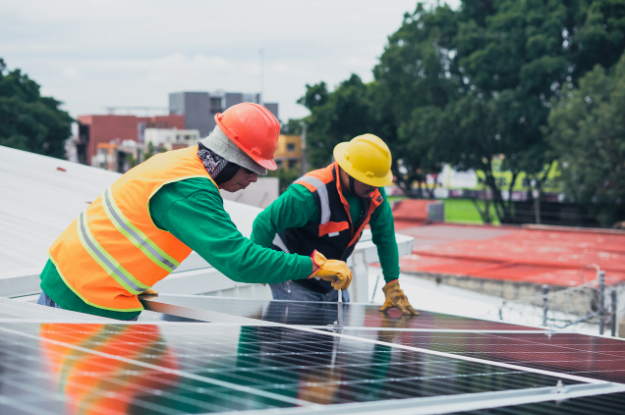Are you curious about the cost-effectiveness of generating electricity with solar panels? With the growing emphasis on renewable energy sources, solar power has emerged as a popular option for homeowners and businesses alike. One crucial aspect to consider when evaluating the feasibility of solar energy is the average cost of solar panels in a specific region. For instance, if you’re interested in exploring solar power in Texas, you may wonder, “What is the average cost of solar panels in Texas?” Understanding the expenses associated with solar panel installation and maintenance can help you make an informed decision about whether solar energy is a cheaper alternative for electricity generation. In this article, we will delve into the topic, exploring the costs involved and examining the factors that impact the affordability of solar panels in Texas.
The Initial Investment: Upfront Costs
When considering solar panels, one of the primary concerns is the initial investment required for installation. It is true that installing a solar panel system can be a substantial investment. The cost includes the panels themselves, inverters, mounting equipment, and installation fees. However, it is crucial to note that prices have been steadily decreasing over the years, making solar panels more affordable than ever before.
Here are some of the key components that contribute to the initial investment for solar panels:
Solar Panels: The cost of solar panels is typically measured in dollars per watt ($/W). As of my knowledge cutoff in September 2021, the average cost of solar panels was around $2.50 to $3.50 per watt. However, prices can vary based on factors such as the brand, technology (monocrystalline, polycrystalline, thin-film), efficiency, and warranties.
Inverter: Solar inverters are responsible for converting the direct current (DC) generated by the solar panels into alternating current (AC) used in your home or fed back into the grid. The cost of inverters can range from a few hundred dollars to several thousand dollars, depending on the system size and type (string inverters, micro-inverters, power optimizers).
Mounting and Racking: These components are used to secure the solar panels to your roof or ground. The cost can vary depending on the type of mounting system required for your specific installation, such as roof mounts, ground mounts, or pole mounts.
Installation: The cost of installation can vary depending on factors such as the complexity of the installation, roof type, location, and labor rates. Typically, installation costs account for a significant portion of the upfront investment.
Permits and Fees: Some jurisdictions require permits and inspections for solar installations, which may come with associated fees. These costs can vary based on your location.
Government Incentives and Tax Benefits
To encourage the adoption of renewable energy, many governments worldwide have implemented incentives and tax benefits for solar panel installations. These incentives can significantly reduce the overall cost of going solar. In some cases, government programs provide grants, rebates, or tax credits that can offset a substantial portion of the initial investment. These incentives vary by location, so it’s essential to research and understand the available options in your area.
Reduction in Electricity Bills
One of the significant advantages of solar panels is the potential for substantial long-term savings on electricity bills. By generating your electricity, you can reduce or even eliminate your dependence on the traditional power grid. The amount of savings depends on various factors, including the size of your solar panel system, your energy consumption, and the amount of sunlight available in your location.
In many cases, homeowners and businesses with solar panels can generate excess electricity during peak production periods. This surplus electricity can be fed back into the grid through a process called net metering, allowing you to receive credits or compensation from the utility company. Over time, these savings can add up, making solar panels a financially viable option.
Maintenance and Lifespan
Another factor to consider when evaluating the cost-effectiveness of solar panels is the maintenance requirements and lifespan of the system. Solar panels are generally low-maintenance, requiring occasional cleaning and inspection. They have no moving parts, reducing the risk of mechanical failures. Additionally, most reputable solar panel manufacturers offer warranties ranging from 20 to 25 years.
With proper maintenance and regular monitoring, solar panels can easily last beyond their warranty period, continuing to produce electricity for many years. As a result, the long lifespan of solar panels contributes to their cost-effectiveness, as the initial investment is spread out over several decades. Find out how to Maximize Your Solar Potential
Environmental Benefits
While this article primarily focuses on the economic aspect of solar panels, it is crucial to mention the environmental benefits as well. Solar energy is a clean and renewable source of power that does not produce harmful greenhouse gas emissions. By transitioning to solar power, individuals and businesses can significantly reduce their carbon footprint and contribute to a sustainable future.
The question of whether it is cheaper to generate electricity with solar panels depends on various factors. While the initial investment for solar panel installation can be significant, it is crucial to consider the long-term economic benefits. Government incentives and tax benefits, coupled with reduced electricity bills and a long system lifespan, make solar panels a cost-effective option for many.
Additionally, the environmental advantages associated with solar energy should not be overlooked. By investing in solar panels, individuals and businesses can play a part in mitigating climate change and promoting a cleaner, greener planet.




